Agitate! Educate! Organize!: American Labor Posters
Lincoln Cushing, Timothy W. Drescher
"We seek to inform as well as to celebrate. The best posters about American workers and the jobs at which they labor make up a visually fascinating body of work that rewards our attention. The posters were produced with a dual purpose: to entertain and to inform. They were also vehicles for working people to present themselves visually, which is rarely as straightforward as it might seem because the labor force itself is not monolithic. Nor are the posters about just paid or wage labor. They repeatedly demonstrate that labor issues include both the workplace and the outside community and often portray families and neighbors, not just fellow workers."-from Agitate! Educate! Organize!
In Agitate! Educate! Organize!, Lincoln Cushing and Timothy W. Drescher share their vast knowledge about the rich graphic tradition of labor posters. Lavish full-color reproductions of more than 250 of the best posters that have emerged from the American labor movement ensure that readers will want to return again and again to this visually fascinating treasury of little-known images from the American past. Some of the posters were issued by government programs and campaigns; some were devised by unions as recruiting tools or strike announcements; others were generated by grassroots organizations focused on a particular issue or group of workers-all reveal much about the diverse experiences of working people in the United States.
American labor posters are widely scattered, difficult to locate, and rarely archived. Cushing and Drescher examined several thousand such images in the course their research, guaranteeing a truly representative selection. The presentation of the posters is thematic, with a brief history of activist graphic media followed by chapters on Dignity and Exploitation; Health and Safety; Women; Race and Civil Rights; War, Peace and Internationalism; Solidarity and Organizing; Strikes and Boycotts; Democracy, Voting, and Patriotism; History, Heroes, and Martyrs; and Culture. Along with the stunning color images, the text contributes to a much deeper understanding of the politics, history, artistry, and impact of this genre of activist art and the importance of the labor movement in the transformation of American society over the course of the twentieth century.
0801474272
Dictionary of Languages : The Definitive Reference to More than 400 Languages
Andrew Dalby
This new tome of tongues is one of the most remarkable general reference works of the century. From Abkhaz and Abaza (300,000 speakers in Georgia, Turkey, and Russia) to Zulu (8,800,000 speakers in South Africa and Lesotho), Dalby comprehensively details more than 400 languages (living and dead), arranged A-to-Z for easy access, and delving into the political, social, and historical background of each. In addition, more than 200 maps indicate where the languages are spoken today, while sidebars show alphabets, numerals, and anecdotes.
If you've got even a passing interest in linguistics, this work of erudition is addictively browsable. In the entry on Greek is an insert on the dialect of Tsakonian. Spoken only in an inaccessible mountain district in the Peloponnese, it's a direct descendant of the ancient Greek Doric dialect. And Fulani is spoken by some 15,000,000 individuals in West Africa, thanks to the migrant, pastoral lifestyle of the Fulani people, which spread the language across the Western Sudan such that it is now a national language in Guinea, Niger, and Mali. The section on Australian languages notes that when Europeans first began to explore the continent, there were about 300 languages spoken by the people who lived there, with up to 12 existing on the island of Tasmania alone. In addition, Dalby explains "mother-in-law languages," separate speech registers that most Australian tongues have, with different vocabulary and sometimes even different sound patterns, for use in the presence of a taboo relative, such as a man's mother-in-law.
Honorary Librarian at the Institute of Linguists and a regular contributor to their journal The Linguist, Andrew Dalby makes it both easy and inviting to learn about the languages of the world. —Stephanie Gold
0231115695
|
Happy Alchemy : On the Pleasures of Music and the Theatre
Robertson Davies Brenda Davies
The following passage reveals Robertson Davies's great love of the theater, and it shows that these collected pieces, numbering 33, transcend mere criticism: "For as long as I can remember, playgoing has stood first among all pleasures with me, and although to most people it is simply a pastime, I think that I have brought qualities to it which raised it above that.... I sincerely believe that I have been a good playgoer, and that is something better, perhaps, than having been a well-known critic."
One's admiration for this literary master doubles when remembering that drama was Davies's academic field, and it constituted one of his three successful careers (he acted with the Old Vic in England). By 1962, Davies had begun to craft his playgoing notes into the Theatre Diary—snippets of which appear in this posthumously published collection. Each of these 33 pieces, introduced by the author and followed by a diary entry or two, demonstrates Davies's enormous and diverse erudition. Included are speeches, prologues to plays, articles about the theatre and opera, a discussion of folksong, a children's opera, a story set to music, and a preliminary sketch of a film script. Several personal essays shed light on his own ambitions as a playwright.
Many of these pieces were lectures, and they enjoy the immediacy and cadence of the spoken word. A spacious tone ensues; that is, complex ideas are delivered clearly, because they are intended for a listening audience. Surprisingly, this enhances the pleasure of reading them. Happy Alchemymay not appeal to the reader whose interest in theater and opera is only occasional but certainly will to any ardent Robertson Davies fan who delights in the turnings of a learned and sophisticated mind. —Hollis Giammatteo
0670880191
Patterns in Network Architecture: A Return to Fundamentals
John Day
Groundbreaking Patterns for Building Simpler, More Powerful Networks
In Patterns in Network Architecture, pioneer John Day takes a unique approach to solving the problem of network architecture. Piercing the fog of history, he bridges the gap between our experience from the original ARPANET and today’s Internet to a new perspective on networking. Along the way, he shows how socioeconomic forces derailed progress and led to the current crisis.
Beginning with the seven fundamental, and still unanswered, questions identified during the ARPANET’s development, Patterns in Network Architecture returns to bedrock and traces our experience both good and bad. Along the way, he uncovers overlooked patterns in protocols that simplify design and implementation and resolves the classic conflict between connection and connectionless while retaining the best of both. He finds deep new insights into the core challenges of naming and addressing, along with results from upper-layer architecture. All of this in Day’s deft hands comes together in a tour de force of elegance and simplicity with the annoying turn of events that the answer has been staring us in the face: Operating systems tell us even more about networking than we thought. The result is, in essence, the first “unified theory of networking,” and leads to a simpler, more powerful–and above all–more scalable network infrastructure. The book then lays the groundwork for how to exploit the result in the design, development, and management as we move beyond the limitations of the Internet.
Using this new model, Day shows how many complex mechanisms in the Internet today (multihoming, mobility, and multicast) are, with this collapse in complexity, now simply a consequence of the structure. The problems of router table growth of such concern today disappear. The inescapable conclusion is that the Internet is an unfinished demo, more in the tradition of DOS than Unix, that has been living on Moore’s Law and 30 years of band-aids. It is long past time to get networking back on track.
• Patterns in network protocols that synthesize “contradictory” approaches and simplify design and implementation
• “Deriving” that networking is interprocess communication (IPC) yielding
• A distributed IPC model that repeats with different scope and range of operation
• Making network addresses topological makes routing purely a local matter
• That in fact, private addresses are the norm–not the exception–with the consequence that the global public addresses required today are unnecessary
• That mobility is dynamic multihoming and unicast is a subset of multicast, but multicast devolves into unicast and facilitates mobility
• That the Internet today is more like DOS, but what we need should be more like Unix
• For networking researchers, architects, designers, engineers
Provocative, elegant, and profound, Patterns in Network Architecture transforms the way you envision, architect, and implement networks.
Preface: The Seven Unanswered Questions xiii
Chapter 1: Foundations for Network Architecture 1
Chapter 2: Protocol Elements 23
Chapter 3: Patterns in Protocols 57
Chapter 4: Stalking the Upper-Layer Architecture 97
Chapter 5: Naming and Addressing 141
Chapter 6: Divining Layers 185
Chapter 7: The Network IPC Model 235
Chapter 8: Making Addresses Topological 283
Chapter 9: Multihoming, Multicast, and Mobility 317
Chapter 10: Backing Out of a Blind Alley 351
Appendix A: Outline for Gedanken Experiment on Separating Mechanism and Policy 385
Bibliography 389
Index 399
0132252422
|
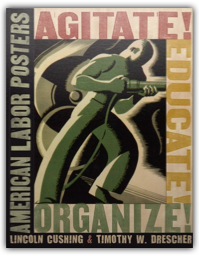
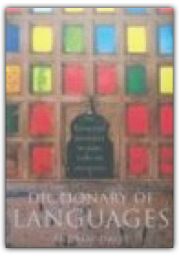

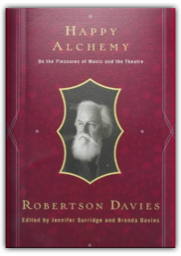
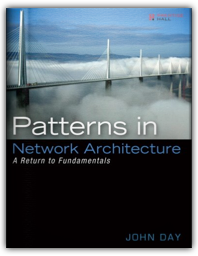

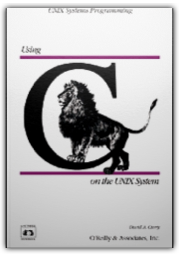

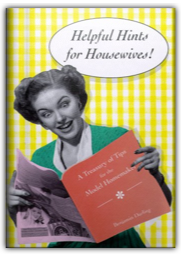


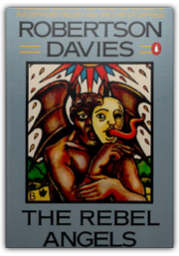

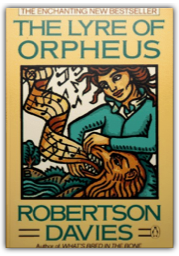
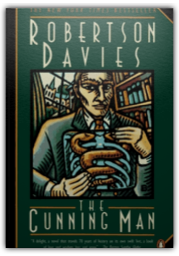
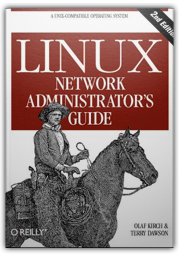
 Made with Delicious Library
Made with Delicious Library